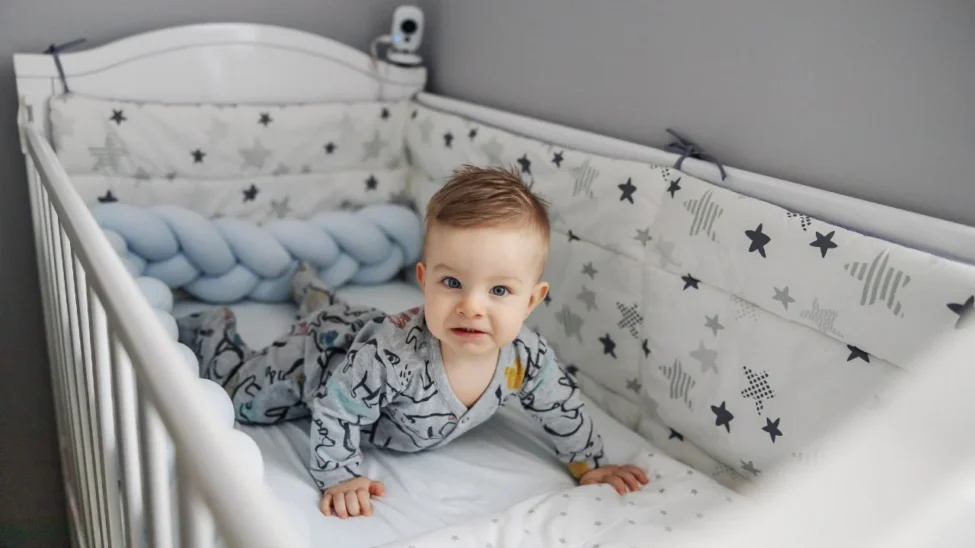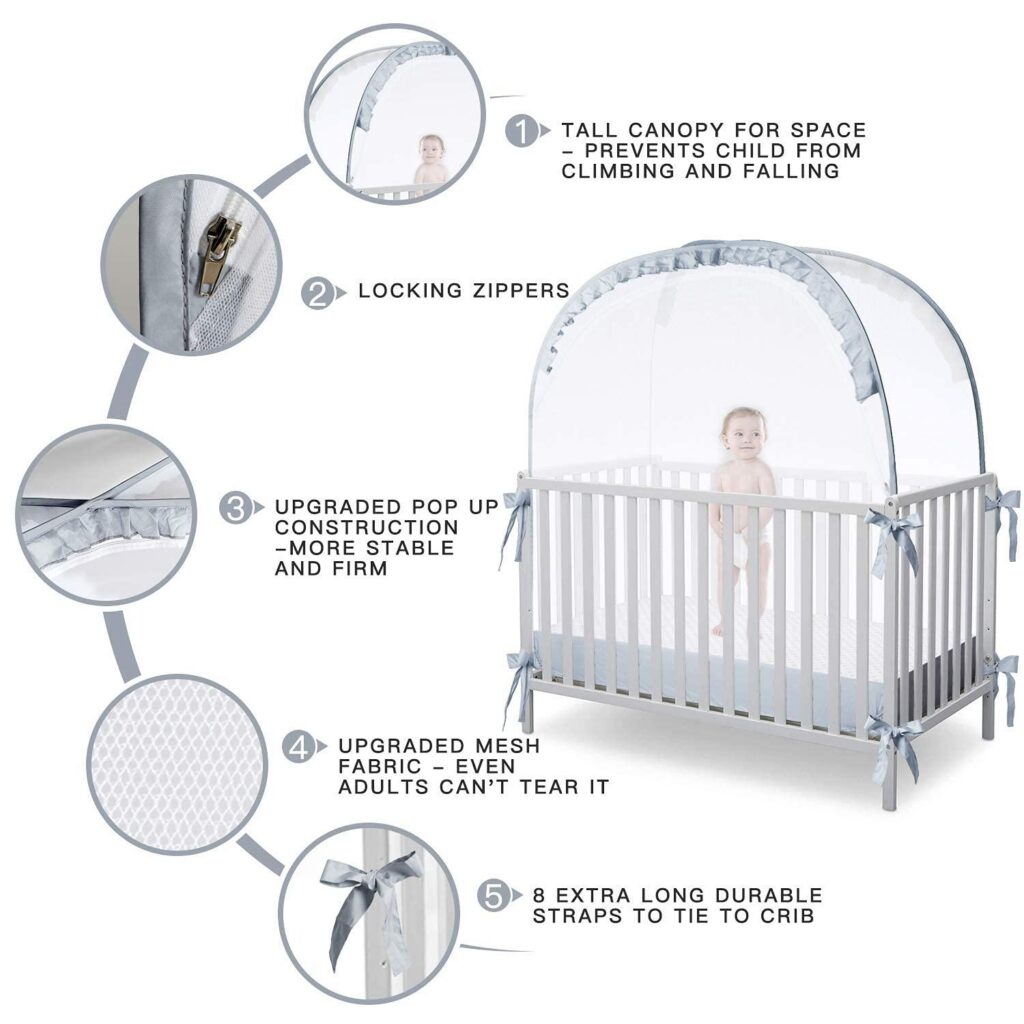
Why Safety Comes Before Anything Else
When I was expecting Dasha, I didn’t really know what made a crib “safe.” I just wanted something pretty, white, and minimal — something that matched the nursery walls. It wasn’t until I started working with dozens of families that I realized safety isn’t about design or price tags. It’s about the invisible things: the gap between slats, the sturdiness of the frame, the type of paint. These are the quiet details that decide whether your baby sleeps peacefully — and whether you sleep peacefully too.
The safest crib isn’t the fanciest. It’s the one that lets you breathe easy at 2 a.m., knowing your baby is okay.
The Real Features That Matter
I get messages from tired parents all the time: “Olga, we bought a great crib but the baby won’t sleep.” And I look at the pictures — and I see the crib right next to a window, a dangling curtain cord within reach, a mattress set way too high for a baby who’s already pulling up. No one teaches you these things in the store.
Here’s what I always pay attention to, based on real-life calls and consultations:
- The slats should be no more than 2.4 inches apart — no exceptions.
- The paint should be non-toxic and certified (you’d be surprised how often it isn’t).
- The frame must not wobble or creak when pressed — that’s your stability test.
- Mattress height needs to be adjusted as soon as baby starts rolling or sitting up.
- And please — no pillows, bumpers, or toys inside. It may look cute, but it’s not safe.
One mom I worked with recently had a beautiful hand-painted crib passed down from her grandmother. But once we checked it, the old varnish had started flaking, and the mattress size didn’t meet current standards. We ended up replacing it — hard decision, but a safe one.

Understanding Safety Certifications Without Getting Overwhelmed
It’s easy to get lost in all the acronyms: JPMA, ASTM, CPSC… You start to feel like you need a degree in engineering just to buy a crib. Don’t panic. Here’s what you actually need to know.
In the U.S., the Consumer Product Safety Commission (CPSC) sets the minimum safety standards for cribs sold today. If your crib was made after June 2011 and it’s sold by a reputable brand, chances are it meets those standards. But check. Labels should mention compliance with CPSC or ASTM safety guidelines, and many also carry a JPMA seal (that’s the Juvenile Products Manufacturers Association). That’s a good sign — it means the crib passed independent lab testing.
A sticker isn’t just a formality. It’s proof someone tested that crib for lead paint, sharp edges, and weight endurance — all the things you don’t see in the product photo.
If you’re buying second-hand, it’s a whole different story. Drop-side cribs are now banned for a reason, and missing hardware can turn even a sturdy frame into a hazard. Unless you know the exact history of the crib and it meets every modern requirement, I always recommend playing it safe and going with a new model.
Little Adjustments That Make a Big Difference
When people think “safety features,” they usually imagine dramatic things — fancy locks or smart monitors. But the truth is, the most important features are small and simple. Things like adjustable mattress height. Teething rails that don’t splinter. A solid base that doesn’t move when your toddler tries to climb.
One dad I worked with recently was proud of installing the crib himself — until his son started biting the railing. The paint chipped. The baby had white flakes on his lips. It turned out the wood wasn’t sealed properly. They had to start over with a new crib, and a lot of guilt. It’s a tough lesson, but a common one.
- Always check teething rails — are they soft, durable, and lead-free?
- Make sure mattress levels can be lowered as baby grows.
- Double-check that all screws are tight every few months.
Small tweaks make a huge difference over time. Safety isn’t one decision — it’s a set of habits, built slowly, over the first months of parenthood.
Beyond the Crib: Creating a Safe Sleep Zone
The safest crib won’t help if the sleep environment around it is risky. I’ve seen cribs positioned near radiators, under shelves with books, even with baby monitors hanging over the rail. All with love and good intentions — and all risky.
Here’s what I always check for during home visits:
- No loose cords, drapes, or wires nearby — especially from blinds or monitors.
- No heavy items on the wall above the crib — nothing that could fall during the night.
- A firm mattress, fitted sheet, and nothing else inside the crib — no blankets, no bumpers, no stuffed animals.
We want babies to sleep safely, yes — but also soundly. And they do, when they aren’t overheated or overstimulated. I always say: less is more in a baby’s sleep space.
Your baby’s crib isn’t a stage. It’s a sanctuary. It should feel calm, simple, and secure.
Bringing It All Together
Safety in baby sleep is one of those things we often learn the hard way. I’ve made mistakes myself — from buying cute but impractical gear to trusting hand-me-downs that weren’t up to code. But the more I talk to parents, the more I see this hunger for clarity: What actually matters? What’s just marketing?
The truth is, you don’t need the most expensive crib. You need the one that meets the standards, fits your baby well, and lives in a room where safety is the quiet priority. Once that’s in place, you’ll sleep easier — and your baby will too. And that, more than anything, is what we all want at the end of a long day.


